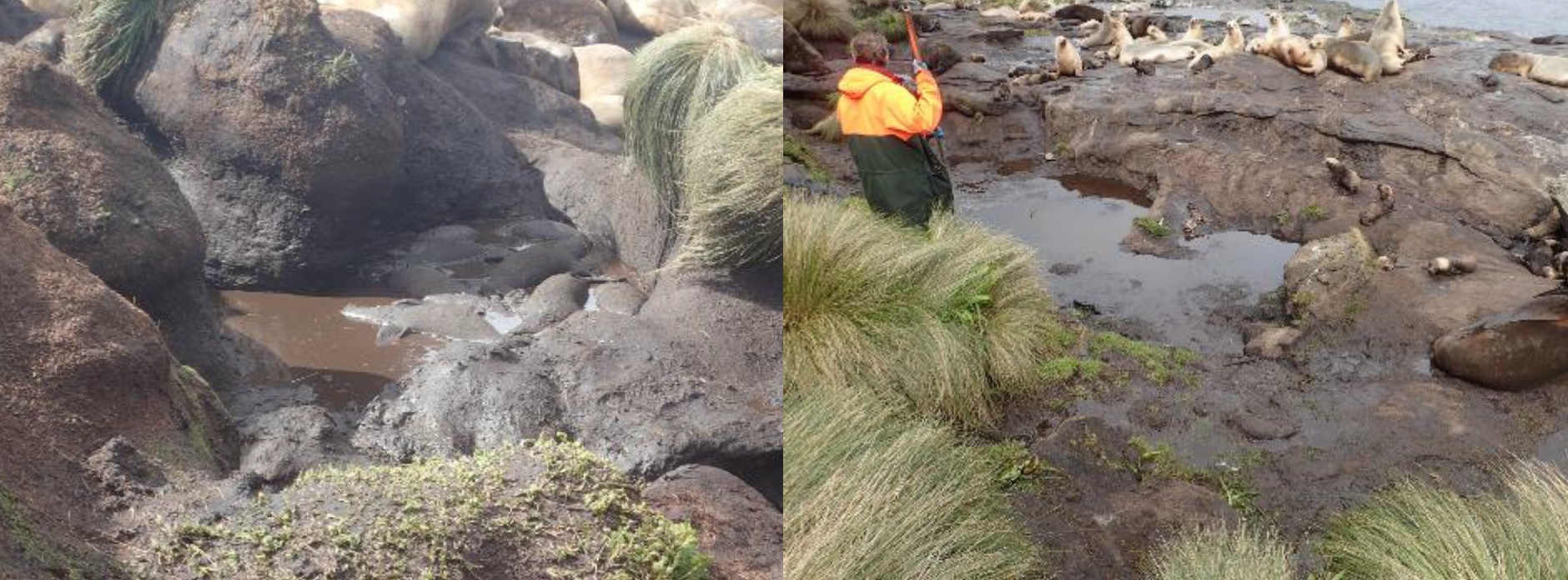Research project to save sea lion pups
Published: 16 November 2017

Mud holes at Campbell Island (Blue Planet Marine, 2015)
Deepwater Group is funding a novel research project as a part of a field trip to monitor sea lion pups at the second largest breeding colony at Campbell Island.
The New Zealand sea lion risk assessment showed that pup mortality from falling into holes, drowning or starvation is a significant issue at Campbell Island.
The study will assess how pups die and inform a plan that will lead to a reduction in the number of deaths of sea lion pups.
Campbell Island is 650 kilometres south of Bluff in the Southern Ocean.
DWG chief executive George Clement said that the more we learn about sea lions, the more we recognise they are at most risk of dying as pups, making it important to find ways to help them survive.
“Forty to sixty percent of pups at Campbell Island have been reported to die in their first few weeks of life. Many of these deaths appear to be due to drowning or being stuck in holes – a problem we think can be fixed and would help the population to thrive,” Clement said.
“Cameras will be set up around mud holes and creeks to monitor the behaviour of pups, and we will utilise GPS technology to track them around the colony.
“By doing this we can better understand how, where and when pups are dying, and identify ways to prevent this.”
Due to Campbell Island being a UNESCO World Heritage site, the assessment will help prioritise which holes need to be addressed and which can be left untouched to minimise any impacts on the landscape.
Department of Conservation science advisor Laura Boren said collaborative projects like this are critical to New Zealand’s marine conservation.
“DOC and DWG have collaborated on other conservation projects, such as studying southern Buller’s albatross on The Snares,” Boren said.
“It can be challenging and expensive work, but through collaboration DOC can bring these ideas to life and make real progress.
“We always look for ways to make the best use of our time while at these remote islands and because of this collaboration we are able to do so much more with the time down there. Not only will we be able to check in on the population but we will also be getting a much more detailed picture of the main causes of the high pup mortality on Campbell Island.”
